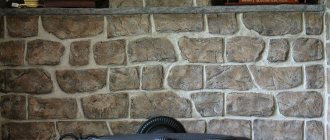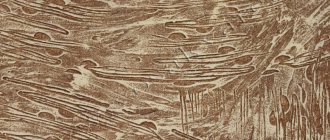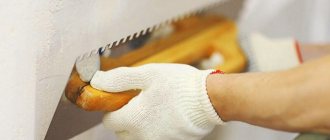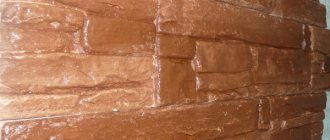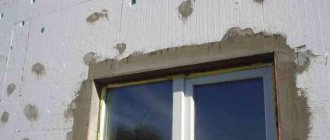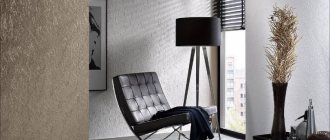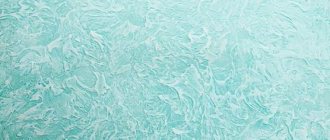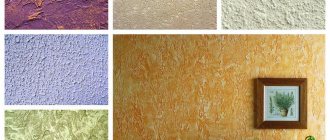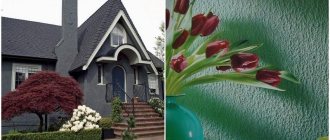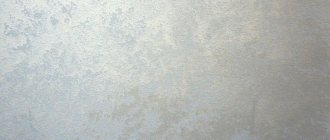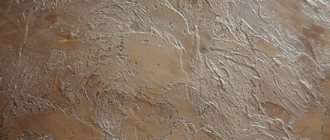In fine art, the Italian word impasto (dough or paste) refers to a technique using undiluted paint that is applied thickly to the canvas. Initially, the method was used to mask defects or certain fragments of a painting - artists mixed pigments directly on the canvas to obtain the desired color or effect.
This technique can add a three-dimensional, almost sculptural quality or create unique textures. The technique uses thickened opaque layers - oil, acrylic, gouache and tempera. Thick brush strokes created relief surfaces on which traces of a brush or spatula are still clearly visible. Some artists applied the method to specific elements of the painting, others, like Vincent Van Gogh, executed entire canvases in impasto.
Features of the technology
The use of impasto evolved into a true exploration by artists of the properties of oil pigment, the standard medium in Western painting during the Renaissance. Oil paintings dry slowly, allowing artists to apply it in thick strokes or in multiple layers. To create particularly expressive effects, paint is applied with a palette knife instead of a brush.
- Unlike wet-on-wet mixing, the impasto technique actually creates a physical sense of volume in expressive, abstract works. To make strokes denser, artists sometimes add wax or other substances.
- Baroque painters, who practically pioneered the technique, mixed paints with varnish or zinc white for rough textures, combined with other techniques to create a wide range of textures and effects in a single work.
- The Impressionists, who prided themselves on spontaneous plein air works, took a completely different approach. Unlike earlier artists, the Impressionists purchased ready-made mixtures and used paint straight from the tube. Thick, vibrant oil paintings retain brush marks.
- Artists of the Post-Impressionist Expressionist era also used thick layers similar to the Impressionists, a practice continued by the Abstract Expressionists throughout the last century.
Northern Renaissance painting
Payment in installments and upon receipt
Installment plan 0% for orders over 5,000 rubles from Tinkoff-bank
Any orders in our store over 5,000 rubles can be paid in interest-free installments for up to 6 months. Installment plans are provided by Tinkoff Bank. To apply for an installment plan, select “Instalment from Tinkoff Bank” when placing an order. The store manager will contact you and help you fill out the necessary documents and submit an application.
Installment plan 0% for orders over 5,000 rubles from OTP Bank
Any orders in our store over 5,000 rubles can be paid in interest-free installments from 6 to 12 months. Installment plans are provided by our partner OTP-Bank. To apply for an installment plan, select “Instalment from OTP-Bank” when placing an order. The store manager will contact you and help you submit your application.
Payment in installments with the Yandex.Checkout service
You can pay for any orders in our store over 5,000 rubles in installments using the “Payment in installments from Yandex.Checkout” service. When repaid in the first month - no additional interest or overpayments, then 3.9%. Repayment up to 12 months. Select "Payment in installments Yandex.Checkout" when placing an order and follow the instructions on the screen.
Payment for video courses in installments without banks
Video courses on sculptural painting You can pay in installments 0% from 2 to 6 months without banks. To apply for an installment plan, select the “Instalment without a bank” option and the manager will issue you an installment plan.
3D effect
Impasto creates a richly textured, three-dimensional surface that holds light on canvases or creates tiny areas of shadow, enhancing the perception of the painting. The impasto effect in a painting serves several purposes:
- adds surface relief, lighting, gives a sculptural quality to painting and accentuates forms;
- used to create areas of visual interest.
Early Baroque artists Rembrandt and Velázquez used impasto in part, for complex textures such as lace, hair, wrinkled skin or the effect of carved stone without copying precise details, folds of clothing, the shine of jewelry, and to enhance atmospheric effects.
Products are safe and certified
All products are registered in accordance with the laws of the Russian Federation and the EEC, and comply with the sanitary and hygienic standards adopted in the states of the Eurasian Economic Union
.
The Evgenia Ermilova™
trademark is officially registered.
Copyright for the video course by Evgenia Ermilova on sculptural painting is registered by the Russian Authors' Society "Kopirus" ISBN: 978-5-4472-8980-5. Artist Evgenia Ermilova is registered in the International Register of Artists, Writers and Musicians International Standard Name Identifier, ISNI 0000 0004 8353 7486
Visual illusion
Impressionists and Expressionists used thick layers to create visual illusions, simulating broken texture, volume, and intense light. Expressionists used technology to convey feelings and emotions. Claude Monet used an architectural approach to impasto.
The impressionists used two methods when working in pastels.
- The first is based on the use of fixatives and adding the fixative by spraying or brushing. Edgar Degas worked layer by layer using this technique.
- The second method is based on the development of pastel acrylic bases that are capable of holding texture on the canvas.
Gouache painting technique
The order of work using one example
As for the coating, it should under no circumstances be glossy, otherwise the solution will not stick. It is best to practice several times on a piece of plywood. It needs to be primed, and then a base coat of mortar is applied. After this, with a pencil we draw the desired figure, for example a bird, on the surface.
After this, you need to apply the solution to the middle of the contours. This is usually done with a spatula or trowel, depending on the required volume of material. However, if the pattern is small, then the solution can be squeezed onto the surface using a pastry bag with an appropriate nozzle. You should not try to process more than 0.2 square meters of surface at a time.
We remove the solution that has gone beyond the contours and let the material dry. After this, we draw the details with a palette knife. This is the most difficult thing, because you need to have imagination and certain skills. After this, the small figurine is almost ready and all that remains is to paint it. By the way, the base layer could have been painted over at the very beginning, or you can paint it now along with the birds. However, the main coating should always then be highlighted against the general background. A metallic nail polish can be suitable for this purpose and will add some highlights.
Sculptural painting with decorative plaster can be done in various ways, and the possible patterns are endless. It all depends on the imagination of the performer, so there is no universal recipe for creating such a coating. You can only learn from individual examples. And this was just one example of work, and it is the simplest.
Texturing
Modern acrylic pastel primers are heavy enough to keep the thick layer flexible without cracking or peeling. This allows you to experiment with pastels and get a variety of textures. To highlight the textural properties of paint, early artists tried to eliminate brushstrokes, but times have changed and today many artists make the most of the properties of visible brushstrokes.
Oil is most suitable for the impasto method due to the viscosity, density and slow drying of the work, but the impasto technique uses acrylic paint or gouache. Tempera has too fine a texture, so the impasto technique is used with fillers.
LiveInternetLiveInternet
Video Lesson. Volumetric painting “Life at the top”
from Artist Alexander Zhilyaev
Available for purchase in HD quality with detailed explanations. For only 640 rubles.
order ... here...
| This is not a recording from the Grand Painting conference, but an independent material created in a calm studio environment and containing full comments on all the actions taking place on the screen. Now you can take your time completing the task. Stop the video and finish the episode, rewind if you didn’t have time to do something. |
Video showing “Castle in the Air”
—————————————— Push: I was lucky to meet this amazing Master! I discovered a new world and new opportunities. Alexander Zhilyaev is a wonderful person and a wonderful teacher! My picture ... Step by step steps...
|
How to apply paint
Paint application methods:
- Paint can be applied with a brush or palette knife, used straight from the tube, or added fillers;
- Dense layers of pigment are left to dry, but slowly to avoid wrinkling or cracking;
- An overly oily medium is difficult for texturing and brushstrokes;
- A flat brush or synthetic brushes are ideal for impasto work;
- For viscosity, pigments are supplemented with sand and sawdust to create volume and texture;
- After the impasto has dried, you can protect the work with a thin film of glaze to prevent cracking.
Impasto, Pastose, or cabinet technique
This is the opposite of the glazing technique.
In principle, these are very similar techniques in meaning: pasty technique or body (pastoso), and impasto (impasto) is translated as dough... That is, the picture is “molded” like dough
Here thick, opaque strokes are superimposed on each other, and the overlying layer completely covers the underlying one. In this technique, the master can actively work with the relief of the painting.
The subject of the painting seems to be molded on the surface of the canvas
Moreover, you can apply paint using this technique not only with a brush, but also with a palette knife. You can also create various patterns with a palette knife or something else, for example, with an ordinary plastic brush from a building materials store.
The technique allows you to get a pleasant feeling of the materiality of objects. This technique is good because it makes it possible to express creative energy with a brush, palette knife, or spatula, for example. Vincent Van Gogh expressed himself as an artist through this painting technique, applying thick paint to the canvas.
This is not so much an oil painting technique, but rather a style of writing in general. And it is also one of the options for painting in oils. Its main principle is to use only one color to paint a picture. Here, all borders and accents are formed by individual shades of the same color, rather than by different colors. The name itself comes from the word gris, which translates from French as gray.
Grisaille technique in oil painting
The grisaille technique is used in monumental and alfresco painting for painting walls and facades, and this technique also makes it possible to perfectly imitate sculptures and sculptural reliefs. But it also occurs in painting interesting pictures.
It is rather a graphic technique of applying paint in one color. Can be on canvas, paper, wood or metal. It has little relation to painting, but the image is applied with oils and brushes.
A rather rare manner in which the author uses slightly diluted, very thick paints. That is, it is written with an almost dry brush. As a rule, with such dilution of paints, they do not allow you to work with shades, but provide greater depth and saturation of the canvas.
Dry brush technique on paper
They say that this style of writing was brought with them by Chinese students who painted ink portraits on paper about 30 years ago for those who wanted it on the street. Well, our artists thought of it... and created their own version, no worse than the Chinese one!
And immediately a question for you, dear readers: what, in your opinion, is more important in a picture: to convey feelings, atmosphere, or details of a specific object or phenomenon? Which technique is closer to you - multi-layer or alla prima?
VIDEO FOR DESSERT: How artistic taste is formed
Friends, so that the article does not get lost among many other articles on the Internet, save it in your bookmarks. This way you can return to reading at any time.
Ask your questions below in the comments, I usually answer all questions quickly
The golden ratio rule
The “golden ratio” is a type of geometric proportion when the ratio of the whole to the larger part is equal to the ratio of the larger part to the smaller in the ratio of 0.618 to 0.382 or 62% and 38%. There are 2 ways to build the structure of a future composition - spiral (logarithmic) and diagonal.
The logarithmic “golden ratio” received its name because of the sequence of rectangles “nested” into each other, the sides of which have a ratio of 0.618 to 0.382. To create a composition, it is not necessary to build rectangles; it is enough to draw a spiral with a pencil on which objects will be located in descending order of size - the largest at the beginning of the spiral, the smallest at the end.
The diagonal “golden ratio” is most often used to place different types of objects. To create a compositional shell, you need to draw a rectangle and draw a diagonal. Then draw a perpendicular to the diagonal from the vertex of the geometric figure, dividing it into segments in the ratio of 62% and 38%. You will get 3 triangles of different sizes, in which significant objects of the future composition will be located.
| The design can be arbitrary - the main thing is that it is convenient and allows you to correctly distribute the important elements of the image and maintain the correct proportions. How to identify significant objects and create a thematic “frame”, and what errors can occur if you neglect the construction of the structure, is described in the video dedicated to working on a drawing using optical transmission technology. |
Rules for constructing a composition
There are 2 types of compositional structures - static and dynamic. The first conveys a feeling of balance, peace and tranquility, the second shows movement, including emotions and elements.
The principle of creating statics and dynamics is based on the deviation of the angle of an object from the vertical and horizontal. The more vertical and horizontal lines there are in objects, the more static the composition, and vice versa. Statics and dynamics are also manifested in the symmetrical and asymmetrical arrangement of objects in relation to each other.
What is the compositional center and how to highlight it
One of the main tasks of the artist is to determine the compositional center - the main object of the work, on which the observer’s gaze should be directed. There are several ways to build a composition in such a way that the viewer first of all pays attention to one or another part of the picture:
- difference in dimensions of the main and secondary objects;
- use of diversity;
- use of guides;
- application of contrast.
The main object of the work is most often depicted as the largest, because large elements attract attention immediately, and only then does the viewer move on to examining small ones. The exception is images where all objects are large and only small. It is usually located in the foreground and plays the role of a kind of “hook” that makes you visually refer to it again and again.
Using multi-plane, the artist can create depth in space by bringing the compositional center to the foreground and placing other objects in the background or vice versa. It should be taken into account that the main element must be the only one in the spatial plane. To indicate the compositional center, the method of guides is also used, which are the objects of the picture. This is achieved in various ways, for example, by indicating the dynamics of the movement of auxiliary objects towards the main one or by turning the gaze of secondary characters towards the main one.
The contrasting compositional center, in turn, is based on the difference between dark and light tones. In other words, the main subject of the composition should be either much darker or much lighter than the secondary ones. When using this technique, it should be taken into account that a dark fill visually reduces, and a light fill visually enlarges the object. And in this video, using the example of working using optical transmission technology, it is shown what violating the rules for constructing a composition can lead to. What happens when it is compositional and chaotically mixed with secondary objects.
Glaze
The famous “Mona Lisa” by da Vinci and “Penitent Mary Magdalene” by Titian were painted using the glaze technique.
So, the first oil painting technique is the glaze technique. I have already told you in detail about this classic technique, so here I will dwell on it briefly.
Glazing is the application of paint in a thin layer to a primed canvas or to a dried layer of already applied paint. This technique is most often used when painting with transparent and translucent paints. It is because of these properties, and because you apply different colors of paint on top of each other, that you can achieve a beautiful and unusual effect, your own unique bright colors.
In addition to working with oil, this technique can also be used when working with watercolor paints, and less often with acrylic paints. If you combine transparent and opaque paints together, you can achieve a beautiful depth effect in the picture.
Overlaying strokes
Another very interesting painting technique is painting with brush strokes. Moreover, there is both rough, impasto (we will talk about it below) and less voluminous.
This technique is used to show and convey all the beauty of the paints and the artist’s color palette.
It is in this technique that knowledge and ability to mix paints is very important. To paint with strokes, you will need to create specific color combinations and divide them into strokes and then apply them to the canvas.
Initially, it may seem that this is just a set of strokes of different colors, but when the picture is ready, you will see the completed work, striking in its richness and dynamism.
Claude Monet loved to paint with brushstrokes. His famous painting “London. Parliament" was written in precisely this technique. Thick and grainy, the brushstrokes cover the entire canvas, enhancing the hazy effect and conveying a wonderful play of light.
Introduction: What is “Oil Painting Technique”?
Translated from Greek, the word “technique” means art, skill. In the case of painting, it is the ability to convey the plot of a painting with paints in a certain manner, to create beautiful visual images.
You need to know the basic techniques of painting, first of all, in order to learn how to create beautiful and durable works, to paint pictures using the most diverse and best materials, taking into account all their features.
In the modern creative world, especially with the development of production and technology, some artistic techniques have also changed, new techniques have appeared, sometimes combining the incongruous. In this article I want to tell you about some classical and modern oil painting techniques, knowing which will make it easier and easier for you to learn to paint and understand painting as such.
I talk in more detail about techniques and techniques in my master class on the theory of oil painting, registration for which is FREE. We won’t paint on it, but we will discuss in great detail everything related to working with oils! And after the master class, I will give you a free lesson on painting the “Starry Sky” painting so that you can immediately try out the knowledge you have acquired.
Register for the master class using the link - https://nyschool.ru/reg_artmk?utm_source=seo&utm_medium=blog&utm_campaign=allseo
